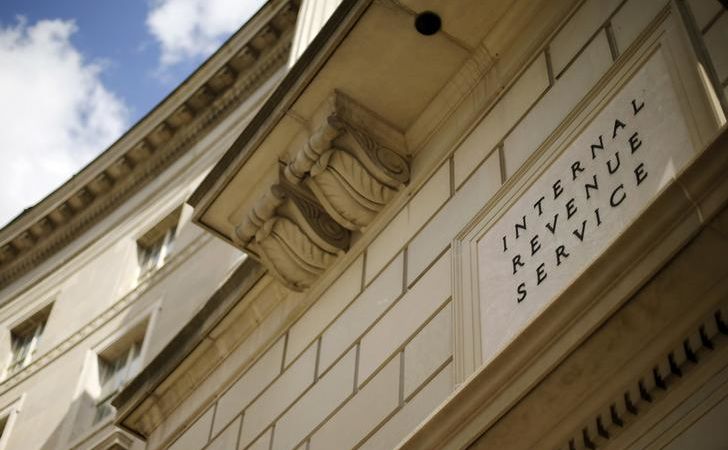The IRS has issued a draft of the 2021 version of Publication 15 ((Circular E), Employer’s Tax Guide). The draft addresses issues such as qualified leave wages for 2020 paid in 2021, the impact of the 2020 COVID-19 related tax credits on the 2021 look-back period and provides further clarification on lock-in letters and invalid W-4 forms.
Background
The Families First Coronavirus Response Act (FFCRA, P.L. 116-127) requires certain employers to provide paid leave to workers who are unable to work or telework due to circumstances related to COVID-19 (Qualified Paid Leave). FFCRA offsets the costs of providing Qualified Paid Leave, up to certain amounts, with refundable tax credits against employment taxes for qualified leave wages taken beginning April 1, 2020 and ending December 31, 2020.
Deferral of the employer’s share of Social Security tax. The CARES Act allows employers to defer payment of the employer portion of Social Security and Railroad Retirement Tax Act (RRTA) taxes and allows self-employed individuals to defer payment of certain self-employment taxes through the end of 2020.
Deferral of withholding and remittance of employee’s share of Social Security tax. On August 8, 2020, President Trump signed a memorandum allowing employers to defer the employee’s portion of Social Security tax (SS) for employees who earn less than $4,000 biweekly or its equivalent under other pay frequencies from September 1, 2020 through December 31, 2020 as a form of COVID-19 tax relief. The IRS has released Notice 2020-65 that postpones the withholding and remittance of the employee share of Social Security tax ratably between January 1, 2021, and April 30, 2021.
Publication 15
This publication provides guidance on the requirements for withholding, depositing, reporting, paying, and correcting employment taxes. The publication also includes information on the forms that employers must give to employees and that employees must give to employers, as well as the forms that must be sent to the IRS and the Social Security Administration (SSA).
Beginning with the 2020 tax year, the publication no longer includes the percentage method and wage bracket withholding tables, as well as the amount to add to a nonresident alien employee’s wages for figuring income tax withholding. The above information will be included in new Publication 15-T (Federal Income Tax Withholding Methods). A draft for the 2021 Publication 15-T was released earlier in November. The Income Tax Withholding Assistant for Employers may also be used to help determine federal income tax withholding.
What’s New
The draft of Publication 15 discusses the various COVID-19 related tax credits available to employers as well as the deferral of the employer’s share of Social Security tax and the deferral of the withholding and remittance of the employee’s share of Social Security tax available from September 1, 2020 to December 31, 2020. The draft also clarifies several non-COVID-19 related issues.
Aggregate Forms 941. The 2021 draft notes that other third-party payers that file aggregate Forms 941 such as non-certified Professional Employer Organizations (PEOs) must complete and file Schedule R (Form 941) if their clients claim the qualified small business payroll tax credit for increasing research activities, the credit for qualified sick and family leave wage, or the employee retention credit, or clients have deferred the employer or employee share of Social Security tax.
Required Documentation. Under the “Recordkeeping” section of the publication, the draft notes that employers must retain documentation to substantiate eligibility for any COVID-19 related credits claimed and substantiate the amount of any employer or employee share of Social Security tax that has been deferred and paid.
Remittance of Deferred Employer Social Security Tax. Under the “Calendar” section under “Before December 1,” the draft provides a tip to employers who have deferred the employer share of Social Security tax that one-half is due by December 31, 2021 and the remainder is due December 31, 2022.
Employer Identification Number. The draft cautions employers to use the Employer Identification Number (EIN) that has been assigned by the IRS to the business and not a Social Security Number, Individual Taxpayer Identification Number (ITIN). The name and EIN on Form 945 must match the name and EIN on submitted Forms 1099-NEC where federal income tax has been withheld.
Optional computation bridge. The draft notes that the 2021 Publication 15-T will include an optional computational bridge to treat 2019 or earlier Forms W-4 as if they were 2020 or later Forms W-4 for calculating withholding.
Lock-in letters. The draft clarifies that employers that receive a lock-in letter prior to 2020 must continue to follow the instructions of that lock-in letter in for 2021. Employers must use the withholding methods in Publication 15-T for employees with a Form W-4 from 2019 or earlier or use the optional computation bridge. The instructions in the lock-in letter must continue to be followed until: (1) the employer receives a letter from the IRS releasing the employee from the lock-in procedures, (2) the employer receives a modification notice, or (3) the employee files a new Form W-4 that results in more withholding than under the notice.
Invalid Forms W-4. The draft advises employers that when an employee was paid wages in 2019 but fails to submit a valid Form W-4 and submits invalid Form W-4 in 2021, employers should continue to withhold as single and claiming zero allowances on a 2019 Form W-4.
Qualified sick and family leave wages paid in 2021. The draft advises that for any 2020 qualified sick and family leave wages that are not subject to the employer share of Social Security tax paid in 2021, the tax rate is 6.2%. It notes that the wage base limit is $142,800 in 2021. Further, 2021 federal tax deposits may be reduced by the anticipated amount of credits. Employers will not be subject to penalties for reducing the deposits.
Lookback period. The draft explains that the total tax liability for the lookback period is based on the amount of taxes reported on Form 941, line 12, or Form 944, line 9. The draft clarifies that total liability for 2020 is not reduced by any amounts that were deferred for the employer or employee share of Social Security tax or refundable tax credits.
Electronic filing of Form 941 by CPEOs. Certified Professional Employer Organizations (CPEOs) could file paper Form 941 for the second, third, and fourth quarters of 2020 due to the numerous changes to the form for COVID-19 related tax credits and deferrals. The draft notes that CPEOs are required to file electronically in 2021 except for the first quarter for which the CPEO was certified.
Public comments regarding the draft may be submitted at https://www.irs.gov/formscomments.








